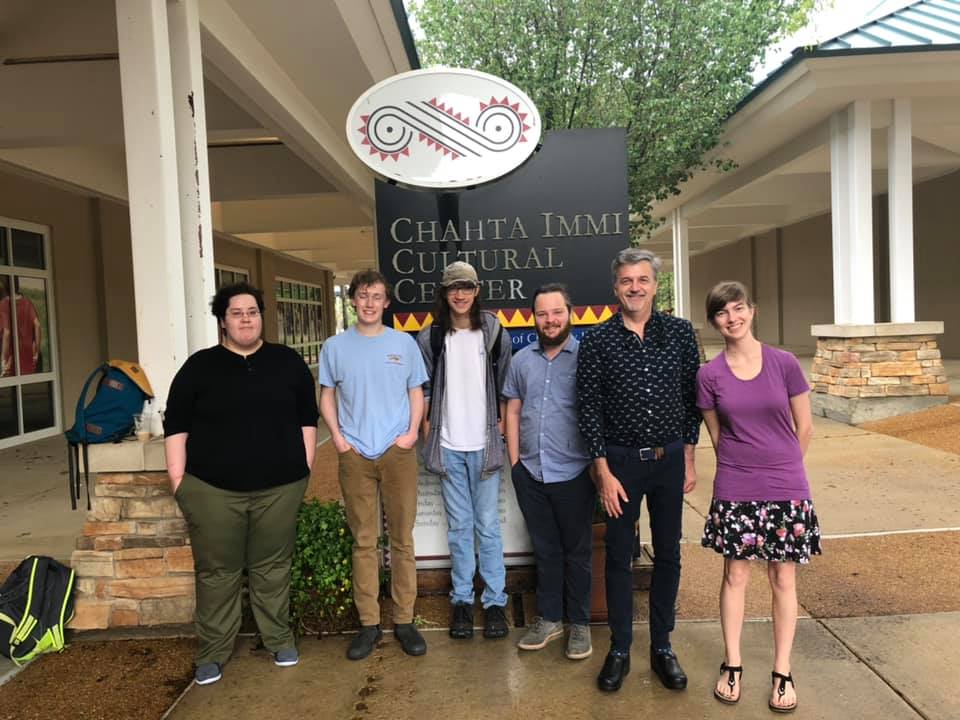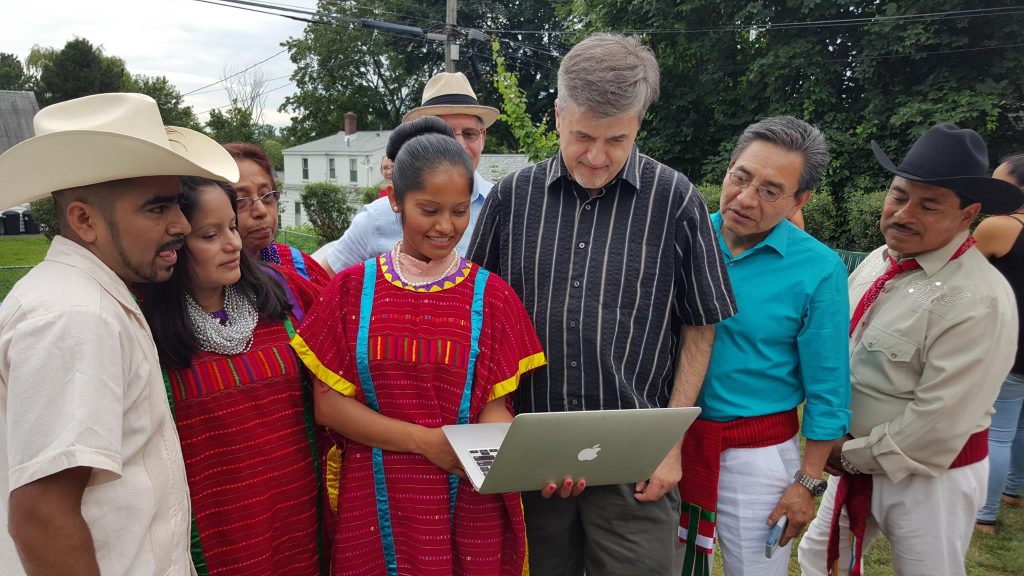I work with several indigenous communities on issues related to language documentation and revitalization.
Copala Triqui language research
Here is a photo with several members of the Copala Triqui community looking at a web-based dictionary of their language. Our Albany Triqui Working Group built this dictionary over several years with contributions from members of the community, especially Roman Vidal López, chief language consultant for the project..
Our process is described in this paper:
Vidal López, Román; de Jesús Ramírez, Monica; Lauren Clemens; Rodríguez, Jamilläh; Stoop, Michael, and George Aaron Broadwell. (2019). Dictionary as entry to literacy and language documentation: A Copala Triqui case study. Presented at International Conference on Language Documentation and Conservation 2019. Honolulu, Hawaii. Feb. 2019.
The dictionary can be accessed at the site below.
- Albany Triqui Working Group. (2014-20). A Copala Triqui – Spanish – English dictionary http://copalatriqui.webonary.org
Choctaw language research
I have been working with the Mississippi Band of Choctaw Indians since about 1983 on language documentation and dictionary-making. The photo below shows me and a group of students from CoLang 2018 at the Choctaw reservation.

I’ll be one of the members of the team working on a new dictionary for Choctaw, along with two UF students — Michael Stoop and Seth Katenkamp. The project is funded by the National Endowment for the Humanities. Read about the grant here.
Timucua language research
Timucua (ISO: tjm) was the major Native language of North Central Florida at the time of Spanish contact and there are many documents written in the language. Though Timucua ceased to be spoken as a first language about two hundred years ago, I am part of a team called Hebuano which is composed of Timucua and other Native people, along with various scholars interested in Native languages and histories. We are producing a public-facing resource for learning about the language, available at Hebuano — A Timucua Language Resource Guide.
A searchable dictionary of the Timucua language is available at Timucua dictionary.
Colonial Valley Zapotec
I am a member of the Ticha project, which is a large digital humanities project aimed at helping Native and non-Native people read and understand texts written in Zapotec from the Mexican Colonial period. Our texts date from 1565 to about 1800.
Zapotec is an extensive language family indigenous to southern Mexico, which belongs to the larger Otomanguean family. Today, there are over 50 different Zapotec languages (iso code zap) most of which are endangered. They are spoken primarily in the state of Oaxaca, Mexico, by a total of approximately 425,000 people (INEGI 2010) within a much larger Zapotec ethnic community. Due to emmigration, there are now Zapotec speakers in many other parts of Mexico and the United States. Dialectal divergence between Zapotec-speaking communities is extensive and complicated. Many varieties of Zapotec are mutually unintelligible with one another. The Zapotec language family is on par with the Romance language family in terms of time depth and diversity of member languages.
The variety of Zapotec presented in Ticha represents the Zapotec of the colonial period of Mexico (1521-1821). During this period, hundreds of documents were written in Zapotec, including religious materials, last wills and testaments, deeds, and letters. Many of these documents were written by native speakers for use by native speakers, such as local administrative texts. Other texts were written to be used by Spanish speaking priests and were likely created in collaboration with Spanish speakers.
The texts currently available on Ticha are written in Zapotec from the Central branch, often referred to as Colonial Valley Zapotec. The Ticha Bibliography lists works written about Colonial Valley Zapotec.
Read our online textbook, Caseidynëen Saën, about Colonial Valley Zapotec texts. (La version en español se encuentra aqui.)
